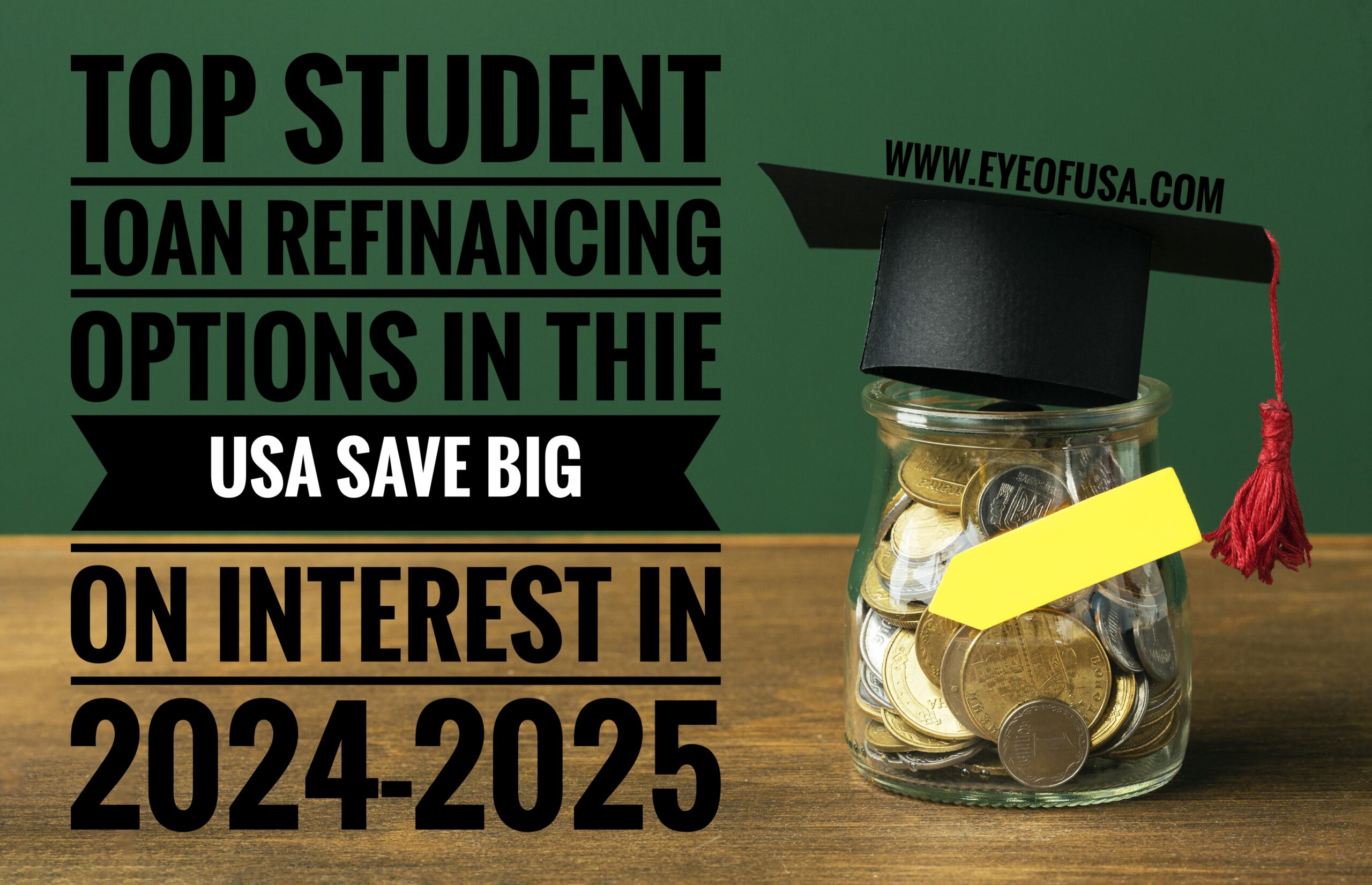Student Loan Refinancing in the USA: A Comprehensive Guide to Save on Your Payments
With the rising cost of education, student loans have become a major part of life for millions of Americans. While student loans provide the opportunity to access higher education, they can also become a financial burden. That’s where student loan refinancing comes in—offering a way to save money and simplify your repayment process.
In this guide, we’ll dive into everything you need to know about student loan refinancing in the USA—what it is, how it works, and how you can take advantage of it.
What is Student Loan Refinancing?
Student loan refinancing is the process of taking out a new loan to pay off one or more existing student loans. The new loan typically comes with different terms, such as a lower interest rate, which can save you money over time. Unlike consolidation, which simply combines multiple loans into one, refinancing can help reduce your monthly payment or interest rate.
When you refinance, a private lender pays off your current loans (both federal and private, if applicable) and gives you a new loan with a new rate and term. This can be a smart move if you qualify for a lower interest rate than you’re currently paying.
Benefits of Refinancing Your Student Loan
- Lower Interest Rates: Refinancing allows you to lock in a lower interest rate, potentially saving thousands over the life of the loan.
- Reduced Monthly Payments: By extending the term of the loan or reducing the interest rate, your monthly payment can become much more manageable.
- Simplified Payments: Instead of juggling multiple payments, you’ll have just one, making it easier to keep track.
- Flexible Loan Terms: You can choose to shorten your loan term to pay it off faster or extend it to lower your payments.
Who Should Consider Refinancing?
Refinancing isn’t for everyone, but if you meet the following criteria, it could be a smart financial decision:
- You have a good credit score (typically 650 or higher).
- Your current interest rates are high.
- You’re financially stable enough to manage a new loan term.
- You don’t plan on using federal loan benefits like income-driven repayment or loan forgiveness.
For those with federal student loans, refinancing can cause you to lose certain protections and benefits, so it’s essential to weigh the pros and cons carefully.
How to Refinance Student Loans in the USA
Refinancing your student loans is a straightforward process if you follow these steps:
- Check Your Credit Score: Lenders will evaluate your credit, so make sure your score is strong.
- Shop Around for Lenders: Compare offers from different private lenders to find the best rates and terms.
- Submit Applications: Apply to your chosen lender(s), which often requires documentation like proof of income, existing loan details, and personal identification.
- Sign the Loan Agreement: Once approved, sign the new loan agreement, and your new lender will pay off your existing loans.
Top Lenders for Student Loan Refinancing in the USA
Some of the top lenders to consider when refinancing include:
- SoFi: Known for competitive interest rates and no fees.
- Earnest: Offers flexible repayment options.
- CommonBond: A solid option with great customer service.
- Laurel Road: Ideal for healthcare professionals.
Each lender offers different terms and perks, so be sure to compare rates, fees, and customer reviews before making a decision.
Fixed vs. Variable Interest Rates: What Should You Choose?
When refinancing, you’ll have the option to choose between a fixed or variable interest rate:
- Fixed Rate: This type of interest rate stays the same throughout the life of the loan, providing predictable payments.
- Variable Rate: This rate can change over time, usually starting lower than a fixed rate but increasing (or decreasing) depending on the market.
For borrowers who value stability and predictability, a fixed rate might be the best option. If you’re looking for a potentially lower initial rate and are willing to take the risk of future rate increases, a variable rate could make sense.
Impact of Credit Scores on Student Loan Refinancing
Your credit score plays a significant role in the refinancing process. A higher score can help you qualify for lower interest rates, which is why it’s important to improve your credit before applying. If your score isn’t where you want it to be, consider the following tips:
- Pay bills on time.
- Keep credit card balances low.
- Avoid opening too many new accounts at once.
If your score still isn’t high enough, you might consider getting a co-signer to help secure a better rate.
Federal vs. Private Loans: Can You Refinance Both?
Yes, both federal and private loans can be refinanced, but there’s a key difference to keep in mind. Refinancing federal loans with a private lender means giving up certain benefits like income-driven repayment plans or Public Service Loan Forgiveness. This makes refinancing private loans more straightforward since there are fewer federal protections to lose.
If you’re refinancing federal loans, be sure to weigh the potential savings against the benefits you’ll give up.
How to Choose the Right Refinancing Plan
Choosing the right refinancing plan involves considering several factors:
- Loan term: Shorter terms save money on interest but increase monthly payments.
- Interest rate: Choose between fixed and variable rates based on your financial goals.
- Fees: Be aware of any origination fees or prepayment penalties.
Make sure to align your refinancing decision with your overall financial plan to get the most out of your new loan.
FAQs about Student Loan Refinancing in the USA
Q: Can I refinance more than once?
A: Yes, you can refinance your student loans multiple times. As long as you continue to qualify for better rates, refinancing again can help you save even more.
Q: Will refinancing hurt my credit score?
A: Refinancing involves a hard credit inquiry, which may temporarily lower your credit score. However, if you make payments on time, refinancing can help improve your score in the long term.
Q: Can I switch lenders after refinancing?
A: Yes, you can switch lenders by refinancing again. It’s important to review your new loan terms carefully before making any decisions.
Conclusion
Student loan refinancing can be a powerful tool for saving money, simplifying payments, and reducing financial stress. By understanding the process and carefully comparing your options, you can find the best refinancing plan to fit your needs. If you’re ready to explore your refinancing options, visit our recommended lenders and tools on www.eyeofusa.com.
Call to Action:
Ready to save on your student loans? Explore the best refinancing options and tools available on www.eyeofusa.com and take control of your financial future today!



